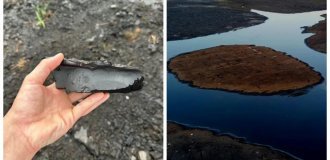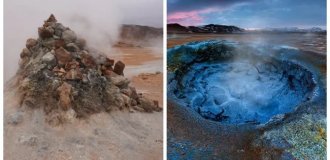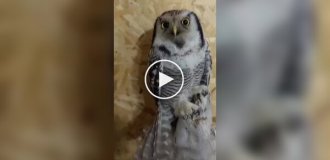Scientists reveal the origin of an ancient sea monster from Scandinavian manuscripts (3 photos + 1 video)
The clue was the strange manner of his hunting.
Australian scientists have come to the conclusion that the ancient marine monster called hafgufa (hafgufa), described in medieval Scandinavian manuscripts, not at all a monster or an extinct animal, but just just a whale. Their study is published in the journal Marine Mammal Science.
Map of Iceland from 1658 showing various mythological sea creatures. An animal marked H has been described as "greatest of whales", which could not chase the fish, but caught it cunning/ ABC Science
A detailed description of the animal is contained in a 13th-century manuscript. called Konungs skuggsj. It was written for the Norwegian king Hakon IV the Old, who ruled from 1217 to 1263. Scientists have discovered mentions of it in more ancient records up to the 2nd century AD.
Contemporaries of the "monster" described in detail his strange hunting style. They reported that he freezes above the surface of the water, opens its mouth, emits stench, and thus attracts fish. How it turned out that humpback whales and Bryde's minke whales also emit a specific smell when they regurgitate food to lure prey.
Biologists have been describing this eating strategy for about ten years. ago, after they were able to capture on video the whales hiding with with wide open mouths in a fixed upright position water surface. Unsuspecting schools of fish perceived gaping maw as a refuge and sailed straight into a death trap.
Marine archaeologist John McCarthy of the College of Liberal Arts, Arts and Social Sciences at Flinders University in Australia said:
I read Norse mythology and noticed this creature, which resembled a whale in its behavior when feeding. When we began to study it a little deeper, we noticed that the parallel is truly striking.
Such a simple explanation for the monster has only now been found for two reasons, scientists say. First, with the advent of drones it became easier to study the habits of modern animals. Secondly, populations whales are just starting to recover to their natural, whaling size. As their numbers grow, so does behavior, ancient instincts wake up in them.





















